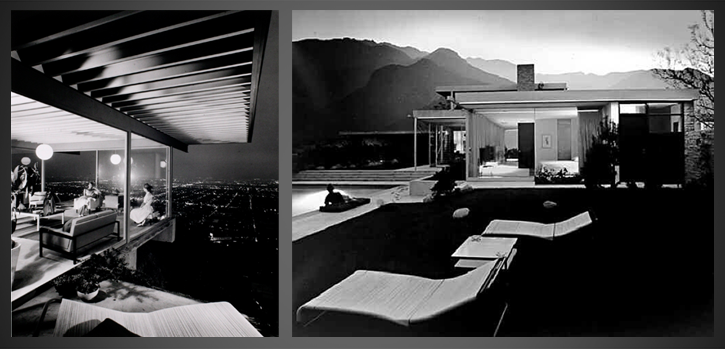As kids on family vacation, our mom would make us stand in the picture when she took photos of the sites. As much as I disliked being in photos at the time, I understand the value of capturing memories of the people, not just the places, on vacation.
Putting people in the picture is not only important for vacation photos, but also for our other photography and visual design.
The Human Dimension: Julius Shulman
Including people in photography encourages the audience to look deeper in the photo and view from a different angle.

I recently watched Visual Acoustics, a documentary about the work of Julius Shulman, the foremost architecture photographer of the moderist area. Shulman photographed southern California homes, and had a knack for capturing the essence of a building and bringing the home to life within a still frame.
The mantra of the modernist era of architecture was, “Form follows function”. Shulman’s iconic photos followed suit by showing homes being lived in, not only as empty structures. When Shulman started out, he noticed that few photos contained people. He decided to go a different route, saying, “I want to show architecture being functional.”#
The moment a person appears in the picture, it entices the audience of the photograph to see another dimension of architecture, as how the house appears to the people who work and live in the house. – Julius Shulman
You can see more Shulman photographs here and the movie trailer here. Note how Shulman staged the photos and used people to add dimension and desirability to the homes.
The Audience Writes the Story: Nighthawks
Have you ever taken note of a stranger and wondered, “I wonder what they’re all about? What’s their story?”

In his book, The Shape of Design, Frank Chimero (seems I’ve been quoting him a lot lately…) points to Edward Hopper’s 1942 painting Nighthawks as an example of how good design invites the audience to create a story.
Hopper’s lure is that the painting lacks a story. He sets the table, we must serve ourselves. The reason Nighthawks has such a compelling hook is because it raises an interesting question with so many clues, but never answers it. – Frank Chimero
While I disagree that the painting “lacks a story”, I love the idea of the painter setting the stage for the audience to create a story around the characters.
It seems we are drawn to personal connection, and have an innate curiosity about people and the stories that they’re living. A story is what makes a still photograph or painting come alive, asking us to narrate a tale based on the clues laid out by the artwork.
Connection
Even as I write about “adding the human element” or “putting people in the picture” of our photos and designs, that sounds a little shallow. Maybe because it’s easy to throw people into the mix or throw a stock photo on top, but miss the point entirely. Maybe the “human element” isn’t just about drawing eyes or getting clicks (though that works), but about something more intrinsic: our desire for empathy and connection with others.
When my mom made us stand in the frame as she took vacation photos, she was showing us what she appreciated about vacation. Not just seeing amazing scenery, but that WE were seeing amazing scenery.
Shulman’s photos said, “This house was designed by someone for your enjoyment.” Ideally, including people in advertising says, “We made this product for you,” bringing connection between the makers and users.
As designers we have the opportunity to create connections between our clients and their customers. In our photography we have the opportunity to tell human stories that create empathy with our audience.
Even as the world is becoming more digitized and in many ways more distant, we have the opportunity to create bring connections between people in our designs and communication. And who knows, maybe the world will become a better place because of it.
